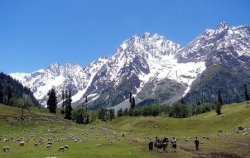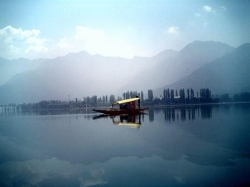A request from Andrew that might appeal to & help our well travelled members – can you help?
Climate change is exposing more outdoor enthusiasts heading for activity holidays in Europe to a potentially fatal tick disease than ever, warn leading scientists. Higher temperatures and more rainfall across central Europe are creating perfect conditions for ticks to thrive in countryside areas, according to the ISW, a group of experts investigating Tick Borne Encephalitis (TBE).
“It is believed that the life cycle of ticks will increase in the next few years, and as a result the geographical distribution of ticks will expand and population density will rise,” said Professor Jochen Süss of the ISW. Tick Alert, a campaign to raise awareness of tick disease has launched ‘Tick Watch 2008’ – the first-ever public survey about ticks in the UK and abroad – and is asking ramblers, campers and outdoor pursuits lovers to take part (visit www.masta.com/tickalert and click on the link). The survey aims to find out if ticks are spreading and becoming more common, if people have had problems with ticks on holidays in the UK or Europe and whether ticks are being spotted outside the main spring/summer tick season. A spokesperson from Tick Alert said: “We hope that by encouraging people to ‘think ticks’ when they are out and about in the countryside that they will be more aware of the potential disease risks from tick bites and take adequate precautions to protect against them.”
The number of TBE cases requiring hospital treatment in Europe rose to 13,000 last year, a 30% increase on 2006. Every year in the UK up to 3,000 people suffer a tick infection and the Health Protection Agency reports that the number of laboratory-confirmed cases of Lyme disease in England and Wales almost trebled to 768 in 2006. Scotland alone has seen a tenfold increase in numbers over the last decade with 177 cases reported in 2006.
Notes:
• The Foreign Office advises that visitors to TBE endemic regions seek advice from their local surgery or clinic – well before travelling.
• TBE endemic countries are: Albania, Austria, Belarus, Bosnia, Croatia, Czech Republic, Denmark, Estonia, Finland, France, Germany, Greece, Hungary, Italy, Latvia, Liechtenstein, Lithuania, Norway, Poland, Romania, Russia, Serbia, Slovakia, Slovenia, Sweden, Switzerland and Ukraine.
• Lyme disease areas of the UK are: Exmoor, the New Forest, the South Downs, parts of Wiltshire and Berkshire, Thetford Forest, the Lake District, the Yorkshire Moors and the Scottish Highlands.
• Ticks are found typically in rural and forest areas from late spring and throughout summer. At-risk groups include all visitors to rural areas of endemic countries, particularly those participating in outdoor activities such as trekking, hiking, climbing, cycling and camping.
 Regular contributor Mac ruminates on the world of travel & some of his adventures along the way — This time round its South Africa…
Regular contributor Mac ruminates on the world of travel & some of his adventures along the way — This time round its South Africa… 

